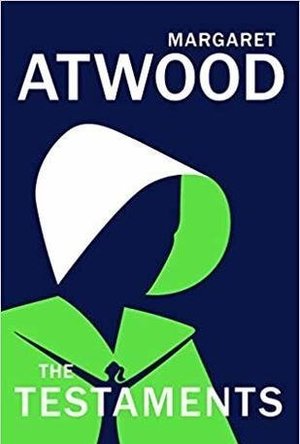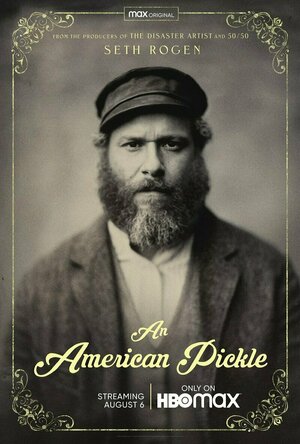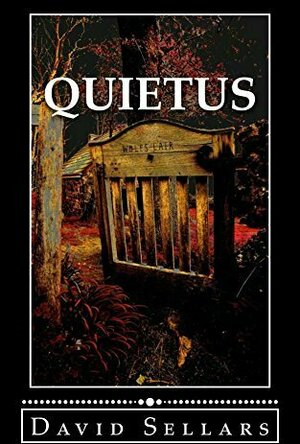Andy K (10823 KP) rated The People Vs. Larry Flynt (1996) in Movies
Sep 14, 2019
This time he decides to take on a subject he is passionate about through the lens of someone he doesn't particularly like. It is hard to believe the real Larry Flynt became a poster child for free speech and freedom of expression just so he could peddle Hustler magazine which showed every variety of "smut", "vile" and immoral behavior and imagery which makes most people disgusted. They even featured a cartoon depicting the characters from "The Wizard of Oz" getting it on with each other!
Larry Flynt started with his brother managing a strip club, but dreaming for something more. Larry decided he would publish a "newsletter" to increase awareness of the club. Upon publication, people became interested in viewing and subscribing to its controversial content, thus an empire was born.
From this club Larry also met his latest dancer soon to be wife, Althea.
The hits started coming almost immediately with different groups causing trouble for Larry and having him arrested. His legal battles soon began as well. His lawyer is not able to control his increasingly belligerent client who shows no respect for the court and openly mocked and disrespected it. Unfortunately, after one of his court appearances, he and his lawyer were shot by a sniper leaving Larry paralyzed from the waist down.
Larry didn't let up; however, deciding instead to take on Reverend Jerry Falwell in Hustler which would ultimately end up with his case being seen at the US Supreme Court.
No stranger to telling a keen biography (Amadeus ranks among the greatest biopics in movie history), director Forman manages to fashion a true tale with such fervor and passion, you get drawn in almost immediately. Even if you hate Larry's message and attitude, you must ultimately completely agree with his right to express it.
Woody Harrelson began getting noticed as a dramatic actor in 1994 with Natural Born Killers and continues to this day including blockbusters like Solo and The Hunger Games franchise as well as meaningful dramatic roles in recent films like Three Billboards and Game Change, Hard to believe the numskull from Cheers has blossomed into a full fledged movie star. His Academy Award nominated performance in this film is so well deserved. He is able to make Larry Flynt repulsive and sympathetic, rude and adorable as well as repugnant and charming all at the same time.
Courtney Love comes form nowhere and plays Larry's wife Althea with energy and really give it her all showing herself as the woman who would stand by her husband no matter what and up against the system. An early performance from Edward Norton is also welcome coming right on the heels of his breakout role in Primal Fear.
The courtroom scenes and not revolutionary, however, the drama and intensity are there broken up by Larry's quips and infant like behavior.
A very entertaining watch from a true master filmmaker highly recommended.
ClareR (6054 KP) rated The Testaments (The Handmaid's Tale #2) in Books
Sep 22, 2019 (Updated Sep 23, 2019)
The Testaments is written from three different perspectives. I was delighted to see the return of Aunt Lydia - and she seems to have hit her stride. She’s much more sure of herself here, even though she is still having to watch her back. Gilead may be ultra-religious, but that doesn’t stop the literal back-stabbing. Aunt Lydia shows just how high the poison has spread. We see more than the subservient Aunt that she seems to be in front of The Eyes, and her backstory is fascinating.
Then there is Agnes, a child brought up in Gilead in a high profile family. We see how girls are ‘educated’ in a world where women and girls aren’t allowed to read and write. Agnes is contrasted with Daisy, a teenaged girl living in Canada, who was smuggled out of Gilead by her mother as a baby. There are obviously some pretty big differences. I don’t actually want to say too much, because I hate having my own reading experience ruined.
I loved this book. I really liked that by the end we couldn’t actually be sure whether Aunt Lydia’s records were genuine or fabricated. The symposium at the end (just as there was at the end of The Handmaid’s Tale) casts doubt on the authenticity of the papers that were found. Just like any written records found in this situation, historians have to be open minded about who could have written them. So we’re left wondering at the end whether what we’ve just read is actually what happened.
So does this deserve to be on the Booker Prize 2019 shortlist? Yes, I think it does. I believe it’s well written, I finished feeling thoroughly entertained and emotionally exhausted! I liked the open end too. Whether Atwood does anything with this open ending is up to her really, isn’t it. But I won’t be disappointed if she decides to leave the world of Gilead here. This book is a great way to end the story.

WebProtectMe Safe Browser with Parental Control
Productivity and Utilities
App
WebProtectMe Safe Browser(tm) is the best parental controls and security browser, providing your...

Plan Monitor
Finance and Utilities
App
SAVE A LOT OF MONEY ON YOUR PHONE BILL. 4 BASIC TOOLS IN 1 APP! DO NOT MISS THE OPPORTUNITY This...

Safety Photo+Video
Utilities and Photo & Video
App
YOU DESERVE SOMETHING SPECIAL TODAY! FULL VERSION IS NOW 50% OFF SALE! BUY NOW BEFORE THE PRICE...
Emma @ The Movies (1786 KP) rated An American Pickle (2020) in Movies
Aug 22, 2020
Herschel and his wife Sarah get to America with hope and the dream of making the Greenbaum family a successful one. Herschel's plan is scuppered when he falls into a pickle vat at his job and isn't discovered for 100 years. The future is a very different place. Reunited with his great grandson Ben he starts to adjust to the new crazy way of life... with just a few bumps along the way.
So... I didn't hate it. It's a comedy that didn't raise many laughs, in me or the others in the screening. There were things that made me smile but I never broke the silence. It felt like a script problem rather than the acting, Rogen can deliver comedy well even if I don't find it funny.
Rogen's performances throughout were good. I couldn't help but watch for the continuity with his two roles, and apart from the frustrating shots needed to hide doubles it was all well done. He even got me with a bit of emotion which caught me by surprise... but that was something else that worked against the comedy, it felt much more like drama.
I enjoyed the different styles of the old country and modern America, the sets and costumes were well thought out and I really enjoyed the hipster joke about Herschel's clothes. But, I had an issue with the filming choice to separate the two eras. You may know from previous rants that I dislike odd aspect ratios, and ugh, why?! The film starts with "old timey" hand drawn style titles and it's shot in 1:33 (according to IMDb), when we hit modern times it reverts to a full screen size. I don't feel like there would have been anything to recover this for me but it would have been... more satisfying?... if they'd stuck to a theme. Go all out, small ratio, muted colours, grainy footage. They use the old photos a few times later in the film and some proper tie in might have been good. There's also a lot of technology based content to emphasise the differences, and that's perfectly logical but there was a lot of it. News footage popped up everywhere, TVs, computers, devices or the characters actually in it. It felt a little odd and a tad excessive.
Early on I noticed a lot of music, when Herschel meets the real world after being pickled I got a heavy Avengers/Cap vibe which almost instantly changed to something very weird and out of place. Almost as suddenly I stopped noticing the music at all, if it was still there it blended a lot better with the scenes... I'll just have to shrug my shoulders on that one.
Everything about An American Pickle is up and down, an odd but interesting story idea, a lack of laughs for a comedy, some great use of atmosphere to illustrate Ben's mood... but that all comes together (or rather it doesn't) into something that left me feeling a little pickled myself.
Originally posted on: https://emmaatthemovies.blogspot.com/2020/08/an-american-pickle-movie-review.html
Ivana A. | Diary of Difference (1171 KP) rated Quietus in Books
Oct 2, 2020
The description about them made me like them in a different way, all of them, yes, even Sophie. The author describes not only the physical part, but also their thoughts and how their mind works, and before you even realize it, you have this strong bond with every single one of them.
The personality of Sophie is so well described, that’s it’s almost unbelievable. All the sociopathic characteristics, the whole building of this character is so appealing to read, it makes you want to know what’s wrong and how it can be fixed, and it is told by Nick, by someone who has affection towards this person and it tells both sides of the story, how a person can make you like them and make you hate them at the same time.
The scenes are so realistic, that I felt like I was there. Each chapter is left unfinished, and it only makes you want to read more and more. The whole death-life thing made this book special to me. It made me think way deeper than just how the scene are put, or how was the description of the characters. Maybe I didn’t get the point of the story… I just wonder now. It will bother me for days, that’s for sure. It will haunt me and make me think again and again, deeper and deeper about what was the character’s purpose in this book. Why they were exactly where they were, and why did Nick went to Jersey right after his death in the first place.
All in all, this indeed was a story that has a deep meaning behind her, that reaches into people’s minds and hearts and certainly stays there for a while, like I’m certain it will stay in mine too. It is a story that makes us realize things about life, and then ask ourselves if what we believed in up until now is really true. It made me think how sometimes dead people can influence us, like Carrie influenced Nick, and Nick influenced Sophie. It makes me think how, in fact, it isn’t the dead people that influence us, but just us ourselves.
When you think about it deeper, you’ll realize we don’t change because someone is influencing, but we change because someone woke up some thoughts in us, and it’s us that realize it all and then change. Did Sophie kill herself, or they were actually there, because the whole trip was their imagination. Did they influence her, or it was only Sophie herself? I guess I’ll never answer some of those questions, but I still do think sometimes it’s us ourselves that realize some things, even though Nick and Carrie’s deaths had a purpose too. If there wasn’t a Carrie, there wouldn’t be an imaginary trip to Sophie’s hospital. And if there wasn’t a Nick, we’d never realize that she’s a sociopath.

Smash Up - The Card Game
Games and Entertainment
App
***“It’s a goofy theme with fun art and high replayability, but beneath that veneer of casual...

Mandala Coloring Pages for Adults
Entertainment and Games
App
Don't you sometimes hate that you are an adult? Try Mandala Coloring Pages - adult coloring book...

Wooden Block Puzzle Game
Games and Entertainment
App
It's FUN, simple and 100% RELAXING guaranteed! Get your BEST puzzle today! Let's join over...



